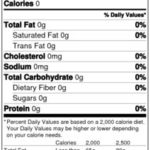In the United States, the unreasonably high price of college textbooks does more than encourage a futile “arms race” with students; it reveals troublesome failures in the market and in the copyright system.
Increased Prices
A few months ago, the American Enterprise Institute announced the “new era of the $400 new college textbook”. The price of college textbooks has risen 1041 percent since 1977 — a near exponential increase that cannot be explained by inflation. Students are captive consumers who are forced to buy the textbooks that their professors prescribe. This locks them into an indirect relationship with publishers who are able to extract high prices because of the absence of competition.
According to Glenn Reynolds, expensive college textbooks feed into the expanding “higher education bubble,” a term that describes the high price of college tuition and accumulation of student debt. Textbook prices add to the cost of higher education and further burden students. It is clear that an economic bubble has formed around publishers and textbook costs. Bubbles exist when the price of a commodity outstrips its intrinsic value. Like the recent housing bubble that adversely impacted aspiring homeowners, many believe that the college textbook bubble is impeding the ability of students to access knowledge.
The high costs of textbooks have created a flourishing sharing economy and inspired creative solutions to ensure equitable access to knowledge. The open educational resources movement, utilized by websites like Boundless.com and others, provides free and unrestricted access to knowledge – much in the same way that generic drugs provide cheap access to product-patented expensive medicines. Textbook publishers responded by suing Boundless for copyright infringement, unfair competition, and false advertising. Boundless settled the lawsuits and has since moved to evolve its product. On the other hand, high book costs are directly forcing students to resort to illegal practices, even book piracy. Such a situation lends credence to the claim that piracy increases freedom and widens access to knowledge, making it a moral good.
Effect of Copyright Restrictions
Some have predicted that the Internet will burst the textbook bubble. But for this to be realized, copyright law must first resolve its tense relationship with digital content and libraries. Libraries have long enjoyed exceptions under copyright regimes across the world to enable equitable and non-commercial access to knowledge for research and education. In the United States, Section 108 of the Copyright Act recognizes this special exception and allows libraries to reproduce and distribute copyrighted works under certain conditions.
But the digitization of books presents unique challenges to publishers and law-makers. Instead of a graded response, the electronic publishing industry has responded with stringent technological protection measures, such as digital rights management (DRM), which restrict access and the ability to reproduce and distribute copyrighted content under the fair use exception. In the United States, the Digital Millennium Copyright Act contains anti-circumvention provisions that lock access controls into digital media. Similar provisions exist in the laws of other countries.
The World Intellectual Property Organization (WIPO) is currently discussing limitations and exceptions to a proposed trans-national copyright regime to protect the ability of libraries to provide affordable access to knowledge. Kenneth Crews, an American copyright scholar and WIPO’s commissioner for limitations and exceptions, presented a detailed study of the goods and mechanisms for enabling affordable access to book in his report.
Would an international framework to facilitate library lending and digital supply of documents, free from the constraints of DRM, affect the US college textbook bubble? It remains to be seen.


